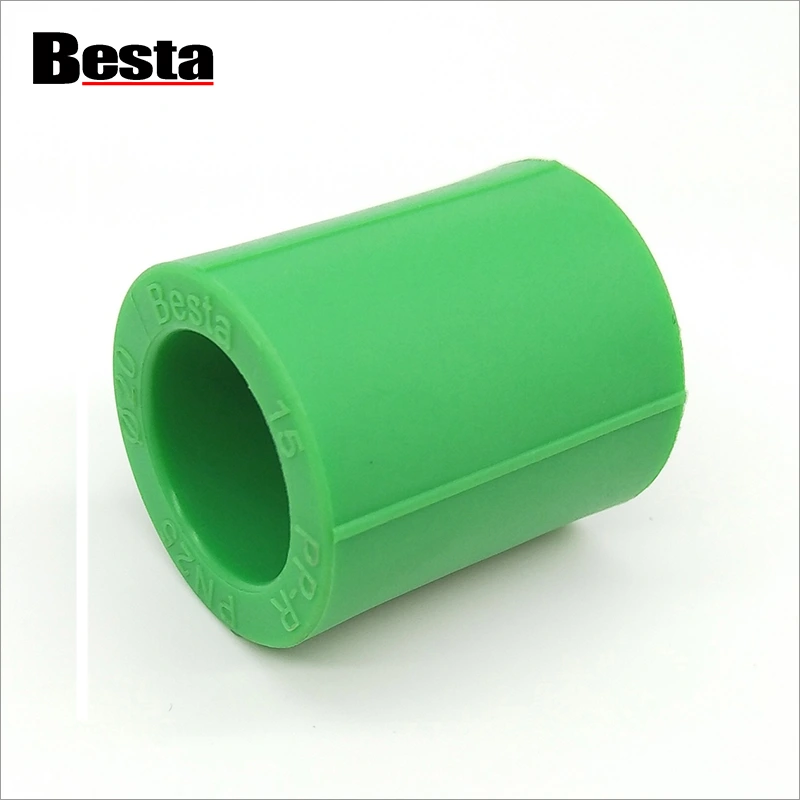Are PPR Plastic Fitting Sockets Environmentally Friendly
2024-11-13
In recent years, there has been an increasing demand for sustainable materials in the construction and plumbing industries. With concerns about the environmental impact of traditional materials, many professionals are turning to alternatives that are eco-friendly and offer long-lasting performance. One such material is PPR (Polypropylene Random Copolymer), which is commonly used in plumbing systems, including PPR plastic fitting sockets. But are these fittings really environmentally friendly? Let’s dive deeper into the eco-credentials of PPR plastic fitting sockets.
What is PPR Plastic?
PPR plastic is a type of polypropylene, a thermoplastic polymer that is commonly used in a variety of applications, including plumbing, piping, and fittings. It’s known for being lightweight, durable, and resistant to corrosion, making it a popular choice in residential and commercial plumbing systems. PPR fittings, such as PPR plastic fitting sockets, are designed to connect pipes and are used to ensure a secure and leak-proof joint.
Now, let’s examine the environmental impact of PPR fittings in detail.
1. Production and Energy Consumption
The production of PPR plastic involves the polymerization of propylene monomers, a process that is relatively energy-efficient compared to the production of other materials, such as metals or concrete. Since PPR plastic is lightweight, it reduces transportation energy costs and the carbon footprint associated with the material.
Moreover, PPR fittings don’t require extensive manufacturing processes or the use of harsh chemicals, making them more energy-efficient and less harmful to the environment during production than traditional materials like copper or steel.
2. Durability and Longevity
One of the primary environmental benefits of PPR plastic fitting sockets is their durability. PPR fittings are known for their long lifespan, with many installations lasting up to 50 years or more. This means fewer replacements and less waste over time compared to materials that degrade more quickly, such as certain metals or PVC pipes that may need to be replaced more frequently.
The extended life of PPR fittings also reduces the overall environmental impact of plumbing systems, as the need for new materials and production is minimized.
3. Resistance to Corrosion and Chemicals
Unlike metal fittings, which can corrode over time, PPR fittings are highly resistant to corrosion. This resistance extends the life of the fittings and minimizes the need for repairs or replacements, which would otherwise contribute to landfill waste. Furthermore, PPR is resistant to a wide range of chemicals, which means that it won’t leach harmful substances into the environment, a significant concern with certain other materials.
This property makes PPR fittings particularly useful in applications such as industrial piping or water treatment systems, where the environment is exposed to harsh chemicals that can damage less durable materials.
4. Non-Toxicity and Safety
PPR is considered to be a non-toxic material, meaning that it doesn't release harmful substances into the air or water during installation or during its service life. Unlike some plastics, which can release harmful chemicals like BPA (Bisphenol A) or phthalates, PPR plastic is free from these potentially harmful compounds, making it a safer choice for both people and the environment.
5. Recycling and Disposal
Now, let’s address a crucial question: Are PPR plastic fitting sockets recyclable? The answer is yes! PPR plastic is recyclable, and while the recycling rate for PPR fittings might not be as high as some materials like PET or PVC, efforts are being made to improve the recycling infrastructure for polypropylene.
At the end of its service life, PPR fittings can be recycled and repurposed for new products. While the recycling process may not be as widespread as other plastics, many manufacturers are working toward improving this aspect. This helps reduce landfill waste and the demand for virgin raw materials.
In conclusion, PPR plastic fitting sockets are relatively environmentally friendly compared to other materials commonly used in plumbing. Their durability, corrosion resistance, and low toxicity make them an excellent choice for sustainable plumbing systems. Moreover, their recyclability ensures that they can be reused at the end of their life cycle, further reducing their environmental footprint.
While PPR fittings are not without environmental challenges, such as recycling limitations, they represent a step forward in more eco-conscious material choices for plumbing systems. By opting for PPR plastic fittings, you’re choosing a durable and safer option that can contribute to a more sustainable future.



